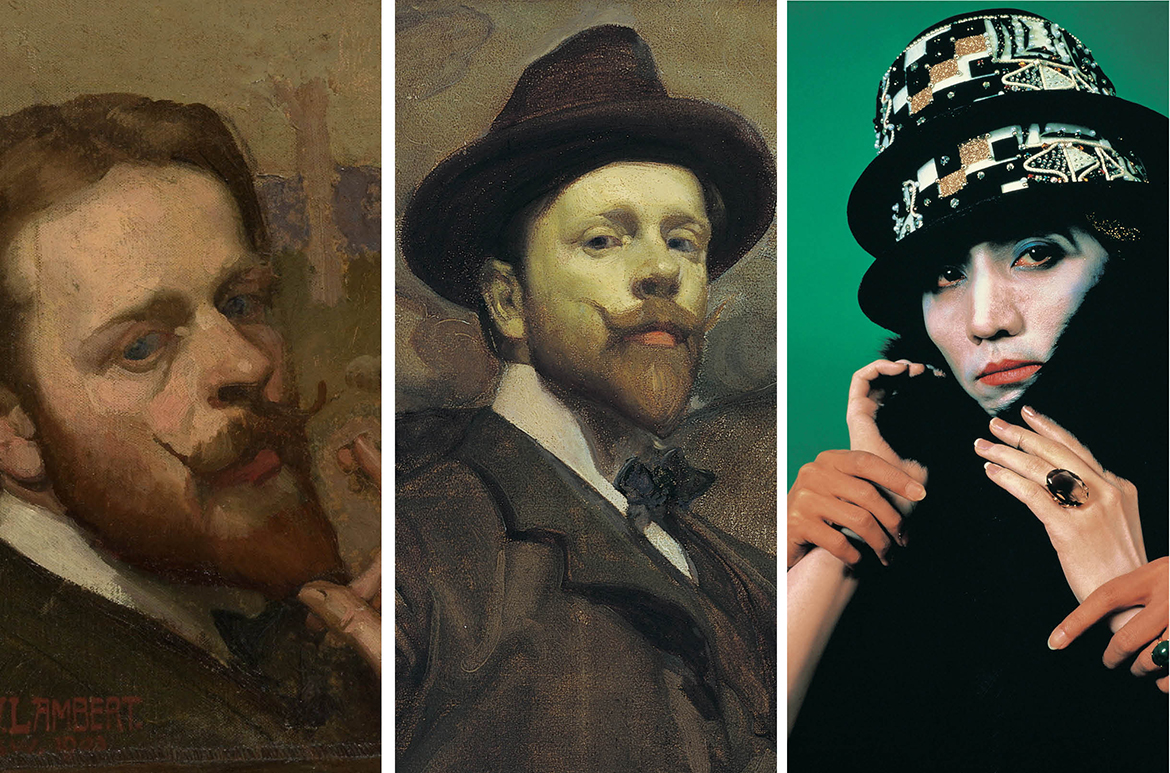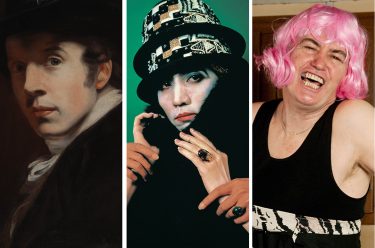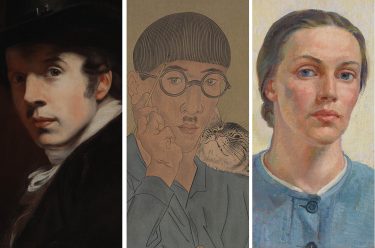‘Strike a pose’ presents artworks made in the first decades of the twentieth century where artists assume the posture of the Grand Manner or ‘swagger’ portrait, exemplified by George Lambert’s The artist and his wife. These paintings are juxtaposed against Yasumasa Morimura’s modern-day parody Doublonnage (Marcel) which riffs on art history and the photographs of Marcel Duchamp, disrupting constructs of gender and race.
Explore the complex and fascinating subject of the self-portrait during the exhibition ‘Looking Out, Looking In’ at the Queensland Art Gallery until 6 August 2023 or follow our blog series.
DELVE DEEPER: Introducting the self-portrait
RELATED: Explore the self-portrait — a distinct form of portraiture
George W Lambert

In 1900, George W Lambert travelled to Europe as the inaugural recipient of the coveted New South Wales Travelling Scholarship, accompanied by his new bride Amy. The pair met painter Hugh Ramsay during the sea voyage, and later befriended fellow expatriate painter Ambrose Patterson while Lambert and Ramsay were studying in Paris. In this tableau, the artist and his circle appear as allegorical figures from history and literature. Reading from left to right, we see Lambert, Patterson, Amy and Ramsay. The identity of fifth figure is uncertain, although possible subjects include Australian painter Arthur Streeton, writer Arthur Adams or English painter Cecil Rae. While the painting is dated 1903, it was likely commenced in 1901 as Amy gave birth to her first son, Maurice, in June of that year.
George W Lambert
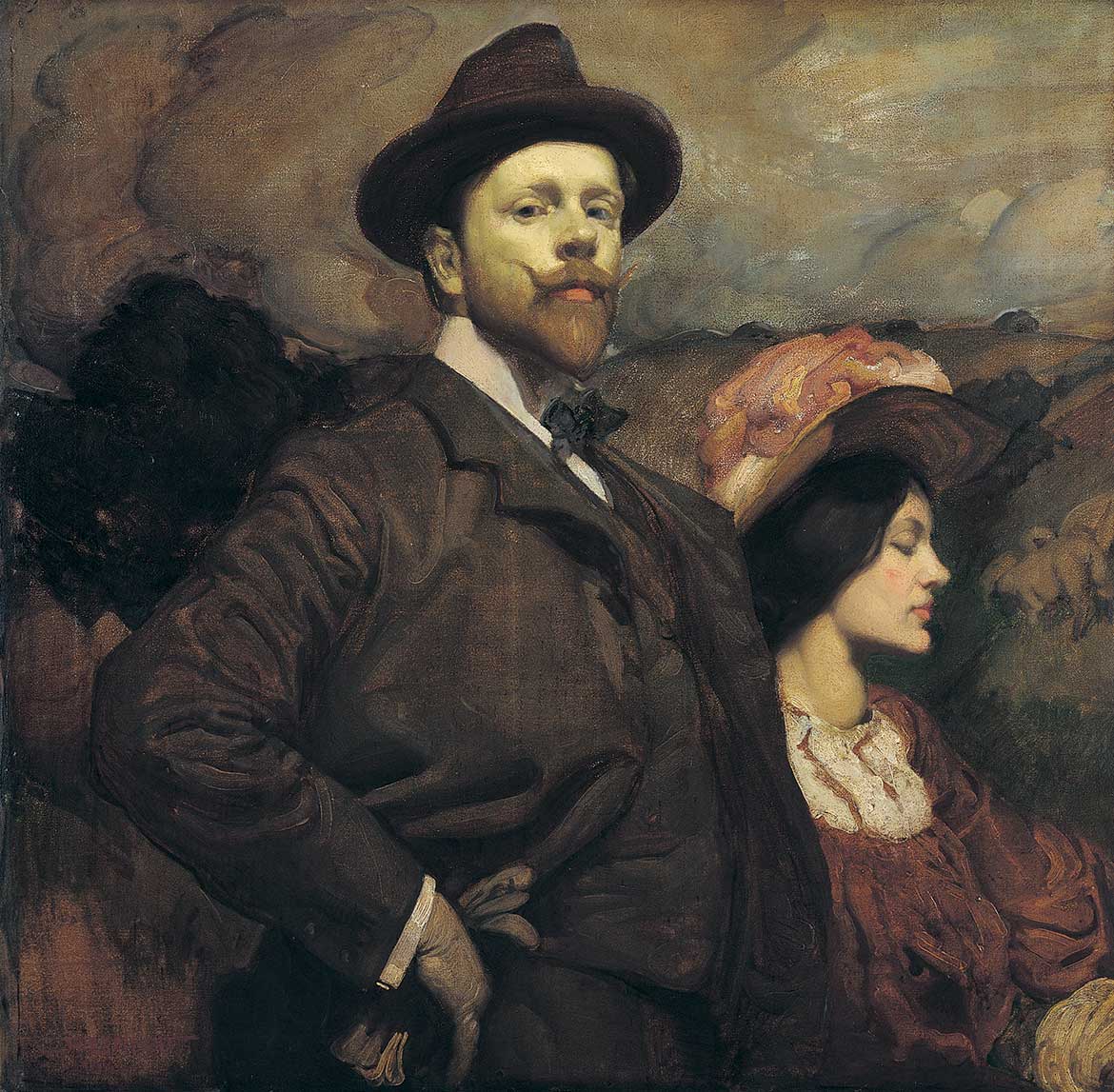
George W Lambert painted this self-portrait, featuring his wife Amy, in the tradition of the ‘Grand Manner’ or ‘swagger’ portrait, which typified English portraiture from the 1630s to the 1930s. The style, which emphasised the subject’s stature through pose and dress, was influenced by the paintings of Flemish artist Anthony van Dyck (1599–1641), named court painter to England’s King Charles I in 1632, and later mastered by the English portraitist Thomas Gainsborough (1727–88) and American painter John Singer Sargent (1856–1925).
Lambert in London established a reputation for portraits of public figures, including his patron, King Edward VII. In addition to these commissions, Lambert often made portraits of family and friends, such as Self portrait with Ambrose Patterson, Amy Lambert and Hugh Ramsay.
Yasumasa Morimura
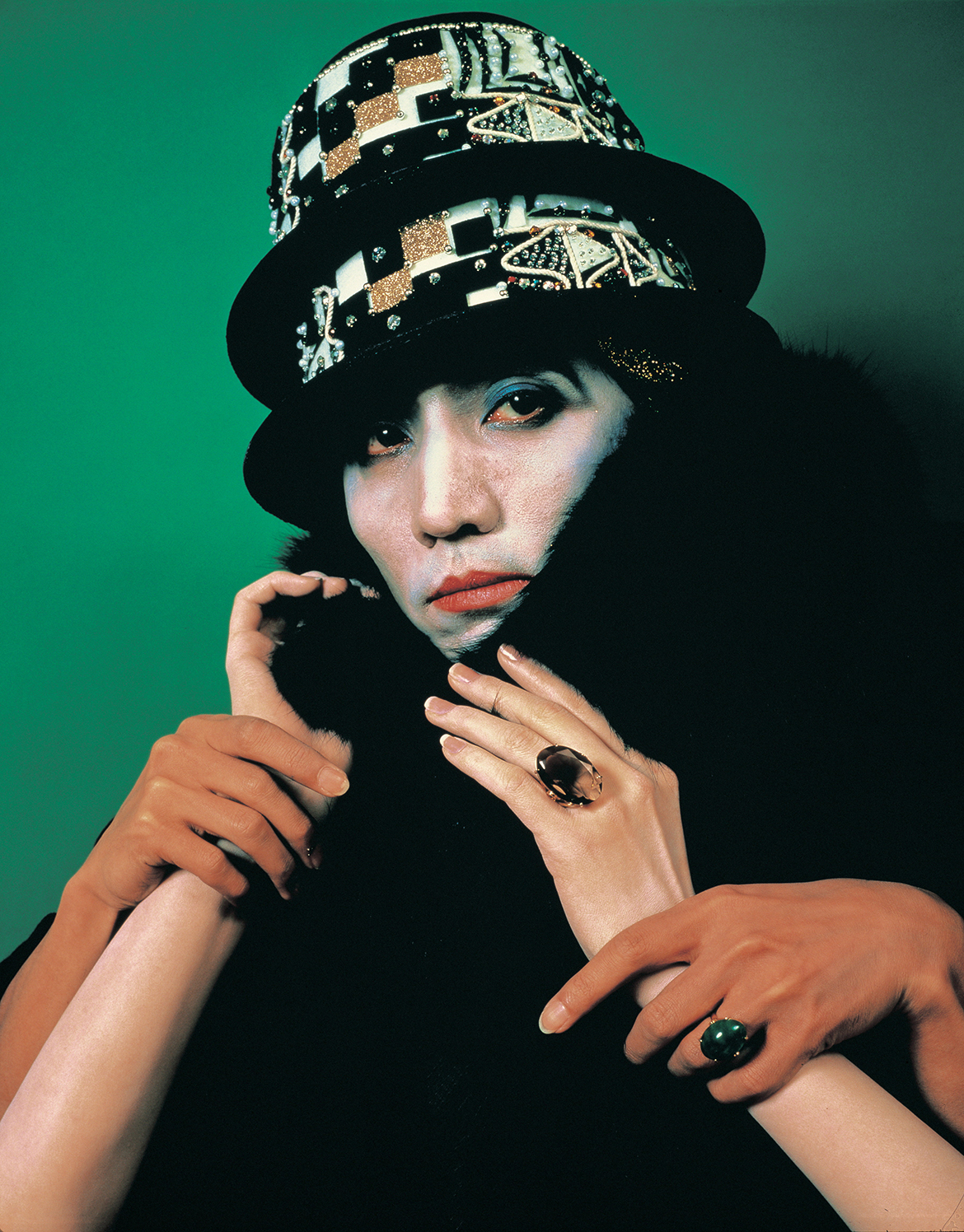
In Doublonnage (Marcel), contemporary Japanese artist Yasumasa Morimura combines performance art with photography, posing himself in a highly orchestrated tableau. He assumes the guise of famous artist Marcel Duchamp’s feminine alter ego Rrose Sélavy, as captured by photographer Man Ray in his classic image from 1921. Referring to Marcel in the title, this large photograph plays with the notion of double meaning. Is the protagonist male or female? How many different disguises (or hats) can one effect? Morimura’s photograph disrupts the conventions of the self-portrait genre while assuming its effects.
‘Looking Out, Looking In: Exploring the Self-Portrait’ / 11 March – 6 August 2023 / Queensland Art Gallery, Gallery 4
#QAGOMA
